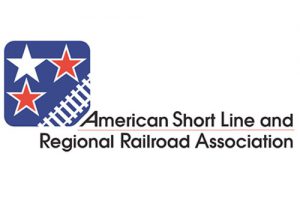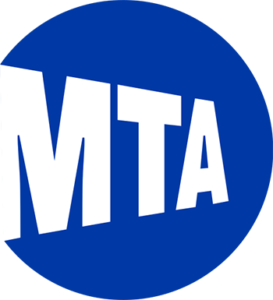Railroads miss opportunity with 60 Minutes segment on PTC
Written by William C. Vantuono, Editor-In-Chief, Railway Age“HOW SAFE ARE AMERICA’S RAILROADS? Lesley Stahl reports on a recent string of crashes on U.S. railroads and the delay in implementing life-saving technology that could have prevented them.” Oh brother. I think you know what CBS 60 Minutes reported on March 3. It’s not pretty. But in my humble opinion, the rail industry can take most of the responsibility for what turned out to be a damaging report, because no one in the rail industry wanted to participate. More on that later. Here, after the fact, unfortunately, is my attempt to shed light on some of the misconceptions and negative picture of our industry the 60 Minutes program perpetuated.
Following are excerpts from the program, which can be viewed at this link. The excerpts are in italics, followed by my comments.
There have been a number of catastrophic train crashes in recent years that may seem to have been isolated incidents. But, it turns out, they are connected in an important way. They illustrate a failure in the railroad industry to implement a life-saving technology that could have prevented them … The list of accidents includes one last year in Cayce, South Carolina, where an improperly aligned track switch sent Amtrak’s Silver Star, its crew and more than 100 passengers careening off the main line track and barreling into a CSX freight train parked on a siding. As the engineer, Mark James was driving the CSX train along different tracks in the yard, in order to unload freight. That night he and his conductor were working under unfamiliar conditions because the electrical signal system—that sends out alerts when the tracks are not lined up properly—was out of service … It was the CSX conductor’s job that night to throw the switches by hand … to realign the tracks and thereby change the direction the train could go.
This is an over-simplification. The collision occurred in CTC (centralized traffic control) territory where the signal system had been disabled in order to accommodate PTC upgrades. Automatic block signals were disabled and trains were operating under TWC (track warrant control) authority, as in “dark territory.” The CSX freight crew, switching between a yard and a siding on opposite sides of the main line, failed to restore the main line switch to the proper position before releasing its control of the block to the dispatcher. The freight crew effectively lined the Amtrak train into the siding, head-on into the train they were assembling. CSX has since changed its operating practices so that during a signal system suspension, where block signals are disabled and trains operate with TWC, hand-throw main line switches will be secured by the C&S (communications and signals) department; the switches will be locked with signal department locks; train crews will not be able to unlock the switch; use of the switch will require the presence and participation of a signal department employee; train operations requiring the use of these switches will be curtailed during signal suspensions by minimizing industrial and/or switching operations; and “meets” in single-track territory will be scheduled for points outside the limits of the signal system suspension.
Albert Linden owns an electrical contracting business next to the crash site in Cayce, South Carolina. It was his surveillance camera that captured the accident.”
Albert Linden: “These tracks are in horrible shape.”
Are they? How does he know? Is he referring to the yard tracks? Or the main line?
Lesley Stahl: “Had you ever seen any other accident? Any derailment?”
Albert Linden: “Yes, ma’am. It’s quite frequent … In the [past] ten years, there’s probably been seven, eight of them. They forgot to flip the switch, and derailed them in here … it’s a common occurrence.”
An exaggeration. Linden is referring to low-speed yard derailments that typically do not impact main line operations, which are controlled by CTC. The arbitrary numbers of “seven or eight” he cited are a very small percentage of the thousands of low-speed yard movements that would have occurred during the course of 10 years.
What if we told you that mistakes like that, human errors, can be caught, and crashes prevented by a technology that was supposed to be in place by now. Congress mandated that most of the country’s major railroads install the technology by 2015. In a complex arrangement, Congress extended that deadline first to 2018 and now again to 2020. The major railroads—including CSX and Amtrak—each own miles of their own tracks, and their trains ride on each other’s tracks. To make matters more complicated, they’re installing different PTC systems and have to make them compatible with the other companies that ride on their tracks. They’ve also been stymied by software and equipment challenges and regulatory hurdles. As of today, only 10% of the mandated railroads have fully implemented PTC.
This is inaccurate, an oversimplification. PTC implementation is a highly complex, two-tiered process that, when done, represents an investment of up to $15 billion.
According to a Feb. 15 Federal Railroad Administration status update regarding railroads’ self-reported progress toward full PTC implementation (which would have been issued sooner, had President Trump not shut the government down over his fixation on a border wall), all required railroads either met the Dec. 31, 2018 interim deadline for fully implementing PTC systems, or submitted requests demonstrating they met or exceeded the statutory criteria for an alternative schedule provided for by law, permitting up to two additional years, to Dec. 31, 2020, to complete full implementation.
Based upon the latest self-reported data, current as of Dec. 31, 2018, four railroads out of the 41—true, 10%—have fully implemented PTC systems on their required main lines, but emphasizing that 10% figure doesn’t tell the whole story. All other railroads subject to the Congressional PTC mandate satisfied the six statutory criteria necessary to qualify for an extension. Data also show PTC systems are in operation on almost 46,000 of the nearly 58,000 route-miles where the technology must be deployed—86%—and in revenue service demonstration on an additional 288 route-miles.
By the end of 2018, complying with federal law, all necessary PTC system hardware had been installed, radio spectrum acquired, employees trained and testing initiated. The important remaining steps for full implementation include conducting revenue service demonstration (advanced testing on the general rail system), submitting a PTC Safety Plan and obtaining PTC System Certification from FRA, achieving interoperability between host railroads and tenant railroads, and activating the PTC system so it governs all operations on the required main lines.
As of Dec. 31, 2018, host railroads’ operations are governed by a PTC system on 83% of the freight railroad route-miles subject to the mandate, and 30% of the required passenger railroad route-miles are under PTC. Of approximately 233 host-tenant railroad relationships, 16% achieved PTC system interoperability as of Dec. 31, 2018, which means the locomotives of a host railroad and a tenant railroad operating on the same main line can communicate with and respond to the PTC system, including uninterrupted movements over property boundaries—in railroad terminology, interoperability. In addition, FRA has conditionally certified 12 host railroads’ PTC systems, based on their PTC Safety Plans; two PTC Safety Plans are currently under review; and 23 additional PTC Safety Plans must be submitted by June 2020.
It’s important to keep in mind that 4% of railroad main line accidents are “PTC preventable,” according to AAR data. Looking at the safety statistics, since 2000, the overall railroad accident rate has dropped 42%. The track-caused accident rate has dropped 51%. Derailments have declined 43%. The industry has been investing in technology and processes that address the three main causes of accidents: track failure (30%), equipment failure (15%) and human error (40%). The remaining 15% is attributable to miscellaneous causes.
PTC is designed to prevent train-to-train collisions, overspeed derailments, unauthorized incursions into maintenance work zones, and movement of a train through an improperly lined turnout. PTC will not prevent accidents caused by track or equipment failure, trespassing, grade crossing collisions caused by improper motor vehicular movement (i.e. trying to “beat the train”) and certain types of train operator error.
PTC equipment requirements are, in a word, staggering: Outfitting more than 20,000 locomotives and 24,000 wayside locations, each with a unique digital address. Geospatial mapping of thousands of track-miles with millions of network data points (roughly 2,000 data points per 100 track-miles). PTC back-office servers that aggregate and distribute train-specific data in real time. PTC communications servers that provide connectivity among all elements. An entirely new interoperable wireless communications network consisting of more than 400,000 components, and fitted with cryptographic protective measures.
Lesley Stahl: “It seems so obvious. It just seems so urgent that it’s almost unfathomable that it doesn’t get done.”
[NTSB Chair] Robert Sumwalt: “That’s why the NTSB is just flabbergasted that we still don’t have it more than 10 years after Congress mandated Positive Train Control.”
One issue has been the Federal Railroad Administration, FRA, the railroad’s regulatory agency, criticized in government reports for not vigorously enforcing the PTC mandate. We tried to talk to the agency but they declined our interview request. Its handling of PTC has been a source of frustration for Robert Sumwalt of the NTSB.
Lesley Stahl: “The regulatory agency, the Federal Railroad Administration, are they just not doing their job?”
Robert Sumwalt: “Well, we have issued recommendations to the FRA and they’ve not acted upon those.”
What recommendations, and when?
Lesley Stahl: “Why are they (FRA) so lenient with the railroads? Somebody told us that in his opinion they’re captive to the railroad system, to the industry.”
Who said that? Sounds like someone with an axe to grind.
Robert Sumwalt: “The regulator needs to step up to the plate and do [its] job and regulate.”
Robert Sumwalt is flabbergasted? I’m flabbergasted that he would make such irresponsible, damaging comments. What was he thinking? If Sumwalt would like to respond in this space, I’ll be glad to publish his comments.
Now, onto the real issue here. It’s a case of what you don’t or won’t say being far more damaging that what you might or should say. If no one in this industry—freight railroads, Amtrak, FRA, AAR—was willing to accept 60 Minutes’ offer to go on the record, on camera, then you have no right to complain.
In my opinion, the producers, Sarah Koch and Chrissy Jones, did the best they could with what they had to work with, which wasn’t very much. They aren’t railroad experts, and neither is Leslie Stahl. Rail operations and technology and the regulations governing them are complicated, understood by few outside the industry. The people at 60 Minutes doubtless had access to all kinds of public data, but no one in the rail industry made themselves available to answer questions and interpret the data. Of course, even if they did, it wouldn’t guarantee that the final product would be accurate and balanced. But at least they’d be able to say they tried.
For the record, I volunteered, but CBS understandably doesn’t want or need to speak with me, as experienced or knowledgeable as I may be. The network that produced broadcast journalism legends like Edward R. Murrow and Walter Cronkite needed to speak with railroads and their regulators, of which I am neither. I’m just an interested observer.
Refusing to participate in the 60 Minutes report was, in my estimation, a mistake, one that this industry cannot afford to make. We expend considerable and necessary resources—people, time and yes, money—on public safety programs and educational initiatives. All it takes is one negative report on national television and on line, by a program with a historically prestigious reputation, to set things back a few decades in public perception.





